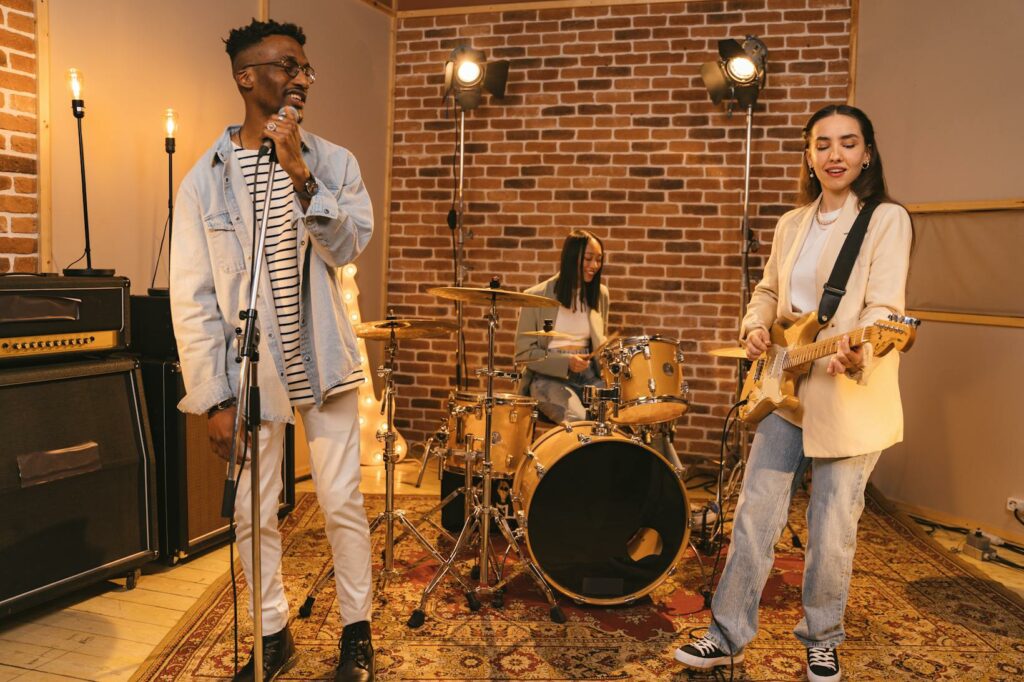In recent years, home studios have transformed from a luxury into a necessity for creatives across various fields. Whether it’s music production, podcasting, or video creation, having a dedicated space at home allows individuals to unleash their creativity without the constraints of traditional studio environments. This shift is fueled by advancements in technology that make high-quality equipment more accessible and affordable than ever before.
For musicians and content creators, a home studio offers the freedom to experiment and refine their craft at their own pace. It eliminates the need to book expensive studio time and provides an intimate setting that often sparks inspiration. Moreover, the rise of remote work and online platforms has made a home studio not just a creative hub but also a viable professional workspace.
Home Studio

A home studio is a personal creative work environment, typically located in a residence, that provides facilities for artists and creators to work on music, video, or other multimedia projects. Unlike traditional recording studios, home studios offer flexibility in setup and customization, allowing individuals to tailor their space according to specific creative needs.
Musicians often equip home studios with essential tools like computers, audio interfaces, microphones, and acoustic treatments. These setups allow them to compose, record, and edit music tracks efficiently. Podcasters typically require a quiet space with quality microphones, headphones, and recording software to capture clear audio content. Video creators might set up cameras, lighting rigs, and green screens to produce high-quality visual content at home.
Essential Equipment for a Home Studio
Setting up a home studio requires some key equipment to optimize creativity and productivity. These essential tools enable artists to produce high-quality content efficiently.
Audio Interface

An audio interface is crucial for connecting instruments and microphones to a computer. It converts analog signals into digital data. Selecting one with multiple input options, such as Focusrite Scarlett, helps manage various audio sources effectively. Look for interfaces with USB or Thunderbolt connectivity for high-speed data transfer.
Microphones
Microphones capture sound quality and texture, making them indispensable in studios. For vocals, a condenser microphone like the Audio-Technica AT2020 offers clarity and detail. Dynamic microphones, such as the Shure SM58, are ideal for live instruments. Select based on the recording needs and environment considerations.
Headphones and Monitors
Accurate sound monitoring is essential to produce polished audio. Closed-back headphones like the Sony MDR-7506 provide isolation and accuracy for detailed listening. Studio monitors, such as the KRK Rokit series, reproduce sound without coloring it. Balancing headphones and monitors in a setup ensures reliable sound checks.
MIDI Controllers
MIDI controllers enhance creativity by allowing artists to control digital instruments. A keyboard controller like the Akai MPK Mini offers compact versatility with programmable pads and knobs. Select a controller that matches the genre and workflow needs for an intuitive production experience.
Setting up Your Home Studio
Selecting the ideal location and implementing essential treatments transforms a space into a functional home studio. Effective setup enhances both the workspace’s functionality and the creative output.
Choosing the Right Space

The right space forms the foundation of an effective home studio. Location is crucial; it’s best to select a quiet area away from noise sources like traffic or household appliances. A room with adequate space for equipment and movement enhances comfort and workflow. Consider natural light availability, which can improve mood and energy levels during creative sessions. Proper ventilation ensures a comfortable environment, reducing distractions and maintaining focus.
Acoustic Treatment
Investing in acoustic treatment elevates audio quality. Place acoustic panels strategically to minimize sound reflections and absorb excess noise. Bass traps positioned in corners help control low-frequency sounds. Diffusers scattered across the room break up sound waves, creating a balanced acoustic environment. These elements work together to deliver clearer recordings, making post-production processes more efficient and effective..
Productive Workspace

Home studios have become an essential part of the creative landscape, offering unparalleled opportunities for artists to express themselves. With the right setup and equipment, individuals can produce professional-grade content from the comfort of their own homes. By embracing modern technology and optimizing their workspaces, creatives can unlock new levels of productivity and inspiration. As the trend toward individual content creation continues to grow, home studios will play a pivotal role in shaping the future of the creative industry.

